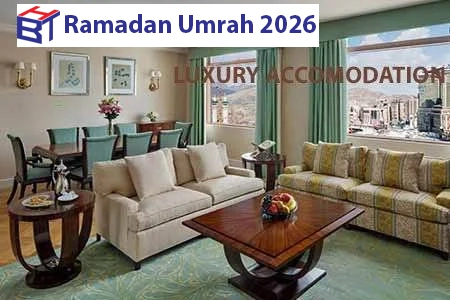Madinah’s historical sites
The Prophet’s city of Madinah is replete with important historical sites including mosques. Pilgrims who come for Hajj and Umrah visit them to get spiritual awakening inspired by the life and history of Prophet Muhammad (peace be upon him) and his noble companions.
Quba Mosque:
Quba Mosque is one of the most important historical sites in Madinah. It was the first mosque established by the Prophet Muhammad (ﷺ) after He migrated to the city from Makkah. People can reach the Quba Mosque by walking half an hour from the Prophet’s Mosque. It was renovated and expanded later by Caliph Othman Bin Affan. Caliph Omar Bin Abdul Aziz also renovated the mosque and established a minaret for it when he was the governor of Madinah. The largest expansion of the mosque took place during the Saudi era. It can now hold 20,000 worshippers including 7,000 women.
Juma Mosque:
The Juma Mosque, where the Prophet Muhammad (ﷺ) performed his first Juma prayer after reaching Madinah, is another important historical monument in the holy city. Located on the Quba Road, it is also named Bani Salim Mosque, Wadi Mosque a, d Atika Mosque.
Qiblatain Mosque:
Qiblatain Mosque is another popular destination of pilgrims in Madinah. The Prophet Muhammad (ﷺ) changed the direction of qibla from Al-Aqsa Mosque in Jerusalem to the Holy Kaaba in Makkah while he was praying at this mosque on the instruction of Allah. It is also called Bani Salamah Mosque.
Abu Dar Al-Ghafari Mosque:
The Sajada Mosque or Abu Dar Al-Ghafari Mosque is located on the northern side of the Prophet’s Mosque. It got the name after the Prophet Muhammad (ﷺ) spent a long time in prostration while praying at this mosque. Al-Ghamama Mosque is situated about half a kilometer from the Prophet’s Mosque on its southwest. People used to perform Eid prayers at this mosque until the end of the 9th century before it was annexed to the Prophet’s Mosque.
Masjid Al-Ejaba:
Masjid Al-Ejaba, located 385 meters away from Baqea graveyard and northeast of the Prophet’s Mosque is another historical site in Madinah. It got the name after the Prophet Muhammad (ﷺ) prayed there for a long time asking God three things. The Prophet said: “I asked the Almighty three things and He granted me two and withheld one. I begged my Lord that my Ummah should not be destroyed because of famine and He granted me that. I also begged him that my Ummah should not be destroyed by the deluge and He granted it. But He declined when asked to stop bloodbath among Muslims.”
Pilgrims also visit the seven mosques that are located close to the place where the Khandaq (trench) battle took place. According to one report, there were only six mosques in the area. The trench was constructed around Madinah by the Prophet and his followers to defend the city from the Quraishi forces during the fifth year of Hijrah. The mosques were named after those Muslim warriors who were stationed there to monitor the movement of enemies during the battle of Khandaq.
Al-Fatah Mosque:
Al-Fatah Mosque was the largest among the seven and the Prophet used to pray there. One of the seven mosques is named after Salman Al-Farsi, a companion of the Prophet who gave the idea of digging a trench to defend Madinah. Two of them are named after Abubacker and Omar, two important companions of the Prophet Muhammad (ﷺ) who later became caliphs. The remaining mosques are named after Ali Bin Abi Talib and Fatima, may Allah be pleased with them. The Madinah Municipality has developed the area into a park, planting trees and providing parking areas for visitors.
Masjid Al-Anbariya:
Masjid Al-Anbariya is another historical mosque in Madinah, which was constructed in 1908 during the time of Ottoman ruler Sultan Abdul Hameed. It was part of the Hejaz Railway project that linked Madinah with Damascus.
Masjid Al-Suqya:
Masjid Al-Suqya in Anbariya was constructed by the Ottomans and was renovated during the Saudi era. It is located close to Al-Suqya well.
Baqea Al-Gharqad Graveyard is another important place that draws a large number of pilgrims and visitors every year. More than 10,000 companions of the Prophet Muhammad (ﷺ), including his wives except for Khadeejah and Maimoona and other relatives had been buried there. It is now located adjacent to the courtyards of the Prophet’s Mosque. The Prophet Muhammad (ﷺ) used to visit Baqea frequently to pray for his followers and relatives buried there.
Pilgrims also visit the historic battleground in Uhud to pray for about 70 Muslim warriors who fell martyr there, including Hamza Bin Abdul Muttalib, uncle of the Prophet, Misaab Bin Omair, the first preacher appointed by the Prophet, Handhalat Bin Aamir, Abdullah Bin Jahsh, Shumas Bin Othman and Aqeel Bin Abi Omaya (may Allah be pleased with them).
British Hajj Travel has been providing Hajj and Umrah facilities to the Muslim pilgrims all over the United Kingdom for more than a decade. You can talk to our agents within the country in order to get the details you desire. You can rest assured that our charges are not high compared to other services and yet we offer some great facilities to the pilgrims. While dealing with British Hajj Travel, you don’t have to worry about the accommodation in the Kingdom of Saudi Arabia.
We will arrange everything for you according to your needs and the budget available, so feel free to contact us.
Umrah Packages | Hajj Packages | Ramdan Umrah Packages | December Umrah Packages
Article by: Saudi Gazette





